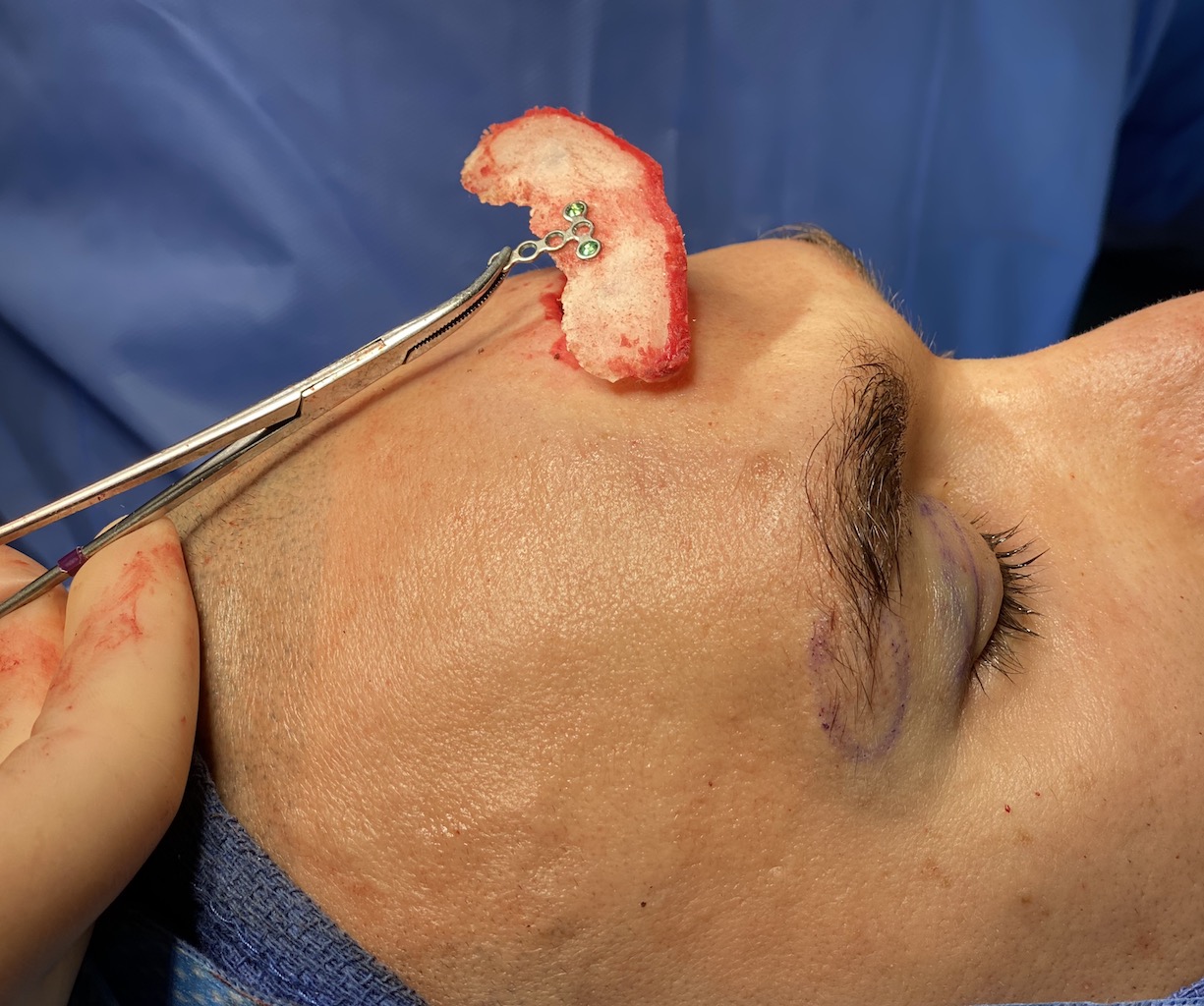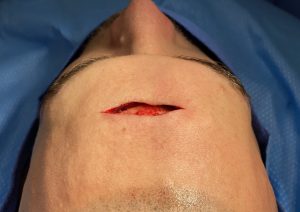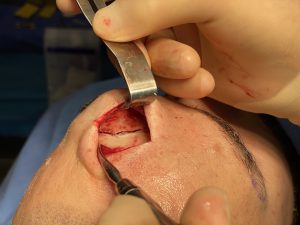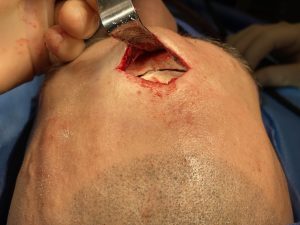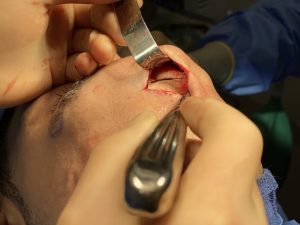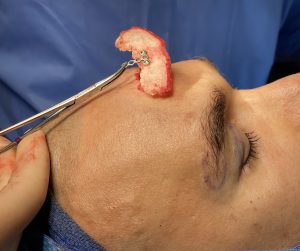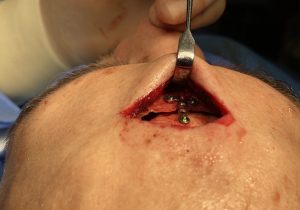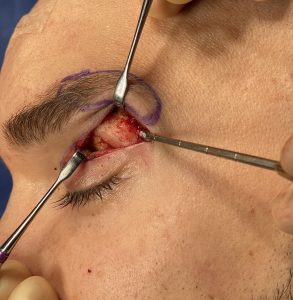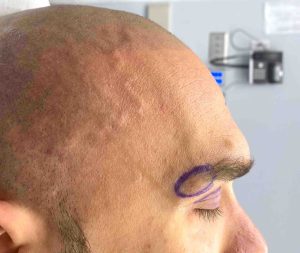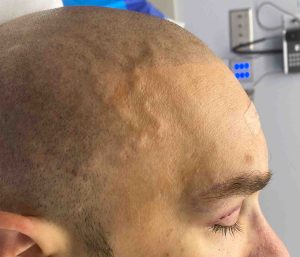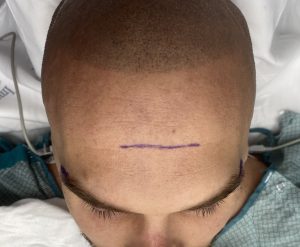Background: Brow bone reduction is most commonly known today because of transgender facial feminization surgery. While that patient population makes up the majority of brow bone reduction surgery today, it is a procedure that has also been used in cis-males as well. For the male with over developed brow bones due to excessive frontal sinus pneumatization the bone flap setback technique remains the most effective reduction procedure. The thin bone cover of the frontal sinus wall permits a limited amount of brow bone reduction by burring reduction only.
For the male who has large over developed frontal sinuses (often referred to as Neanderthal brows), their projection can create an angry undesired facial appearance. It may also cause the forehead to look like it is recessive or has a backward slope to it. (which in some cases the forehead does actually slope backward which magnifies how far the brow bones stick out) While incisional access to do brow bone reduction is always a pertinent aesthetic concern, that issue is magnified in the male who shaves his head, has a short hairstyle or is bald.
The typical scalp incisions for brow bone reduction, at or behind the frontal hairline, is not going to be a good aesthetic choice for most men who have no natural hair coverage. The remaining incisional options are either at a horizontal forehead wrinkle line or directly through the eyebrows. Each incisional approach has its advantages and disadvantages but I would choose the mid-forehead as it has the greatest ability to undergo successful scar revision if needed because it is a natural wrinkle line. Scars at the superior eyebrow margin are not natural and any indentation is easily perceived.
Case Study: This male had prominent brow bones and a forehead that appeared to be reclined but really only appeared that way because of the brow bone prominence. (pseudo forehead retroclination) His brow bone concerns were not only central (the frontal sinus area) but the tails of the brow bone as well.
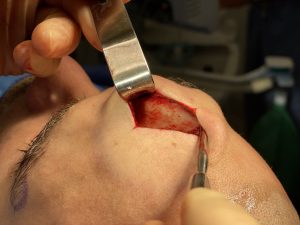

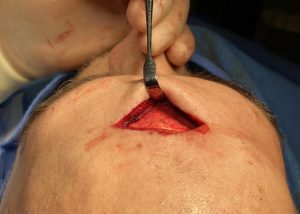
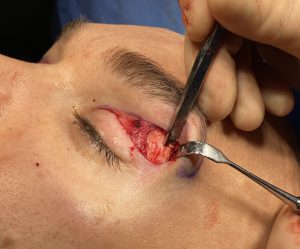

Male brow bone reduction differs from transgender/female brow bone reduction in two ways, incisional access and the magnitude or flavor of the brow bone reduction. In the shaved head male alternatives to a superior scalp approach must be used. Male brow bone reduction is about softening the brow bone projection but not completely eliminating it.
Case Highlights:
1) The major challenge in male brow bone reduction is an acceptable location for the incisions needed to do the procedure.
2)The mid-forehead wrinkle location works best for some men and provides good access to perform the bone flap setback technique.
3) When tail of the brow bone reduction is needed an upper eyelid incision can be used which is particularly convenient if upper blepharoplasties are also planned to be done.
Dr. Barry Eppley
Indianapolis, Indiana

